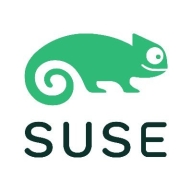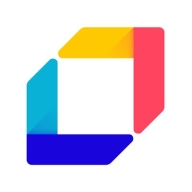

Find out in this report how the two Container Security solutions compare in terms of features, pricing, service and support, easy of deployment, and ROI.
| Product | Market Share (%) |
|---|---|
| Trivy | 6.0% |
| SUSE NeuVector | 2.2% |
| Other | 91.8% |


| Company Size | Count |
|---|---|
| Small Business | 5 |
| Midsize Enterprise | 1 |
| Large Enterprise | 2 |
| Company Size | Count |
|---|---|
| Small Business | 3 |
| Midsize Enterprise | 1 |
| Large Enterprise | 9 |
SUSE NeuVector is a full lifecycle container security solution that helps your organization secure its container infrastructures, manage Kubernetes security risks, and block threats. The NeuVector continuous container security and compliance platform simplifies data protection from pipeline to production, enforces compliance, and provides complete visibility and automated controls for protection against known and unknown threats. In addition, NeuVector is the only Kubernetes-native container security solution that offers a comprehensive risk profile of known vulnerabilities and also delivers immediate protection from all vulnerabilities.
SUSE NeuVector Features
SUSE NueVector has many valuable key features. Some of the most useful ones include:
SUSE NeuVector Benefits
There are many benefits to implementing NeuVector. Some of the biggest advantages the solution offers include:
Reviews from Real Users
A Platform Solution Architect at a tech services company says, “The solution is feature-rich, easy to set up, and has good support.”
Trivy offers comprehensive scanning for files, images, repositories, and infrastructure. It's open-source and integrates with CI/CD for vulnerability detection and security enhancement.
Trivy scans vulnerabilities in code, Docker images, containers, and infrastructure. It integrates seamlessly into DevOps pipelines, ensuring security in dependency management and open source vulnerabilities. This tool, lightweight and open-source, provides user-friendly reports and supports continuous vulnerability database updates, fostering ease of use across operating systems. Users benefit from its scanning capabilities, covering Kubernetes, AWS credentials, and GCP service accounts, effectively identifying vulnerabilities and misconfigurations.
What are Trivy's key features?In industries like technology and finance, Trivy is used extensively to secure applications, perform compliance checks, and offer security metrics visualization. It addresses microservices, container systems, and Kubernetes clusters security requirements, supporting DevOps teams and enhancing codebase analysis precision.
We monitor all Container Security reviews to prevent fraudulent reviews and keep review quality high. We do not post reviews by company employees or direct competitors. We validate each review for authenticity via cross-reference with LinkedIn, and personal follow-up with the reviewer when necessary.